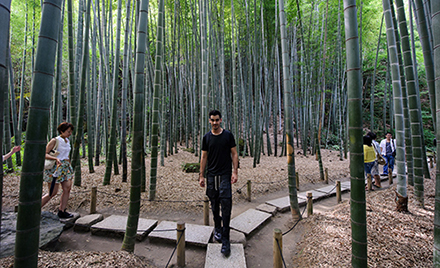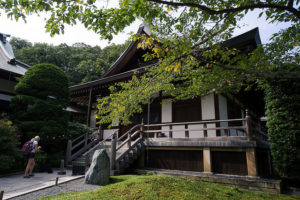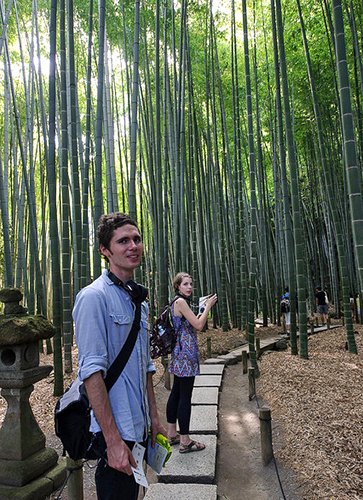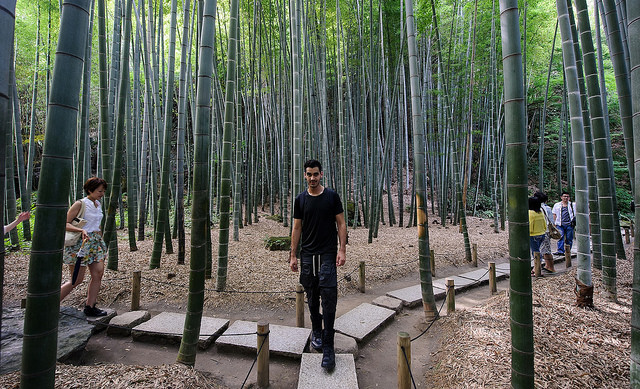
Get Lost in Hōkoku-ji Temple and its Majestic Bamboo Grove
 Hōkoku-ji Temple, also known as “Take-dera” (Bamboo Temple) is located in the Kenchō-ji school of the Rinzai sect of Zen Buddhism in Kamakura, Japan.
Hōkoku-ji Temple, also known as “Take-dera” (Bamboo Temple) is located in the Kenchō-ji school of the Rinzai sect of Zen Buddhism in Kamakura, Japan.
Hōkoku-ji Temple. | Kageaki Smith
The temple is famous for its bamboo garden with about 2000 moso bamboo plants growing way up high to the sky, truly an awe-inspiring sight to behold for visitors.
Hōkoku-ji Temple was founded by the priest Tengan Eko in 1334 to commemorate Ashikaga Ietoki, the grandfather of Ashikaga Takauji, first shogun of the Ashikaga shogunate. Hōkoku-ji was also the temple of the Uesugi clans. Tengan Eko, also known by his Buddhist name “Butsujo Zenji,” was a member of the Five Mountains Zen literary schools (the body of poetry and prose in Chinese produced by Japanese monks during the 14th and 15th centuries).
 Copies of Buddhist teachings by Tengan Eko and carved wooden seals bearing his name are part of the collection of “Important Cultural Properties” of Japan, kept in the Kamakura Museum in the grounds of the Shinto shrine Tsurugaoka Hachiman-gū. Other historic treasures of the temple include a silk painting by Zaichū Kōen dating back to 1388, a painting of Arhats (a “perfected person” or one who has attained nirvana) and other such works that are considered Prefectural Cultural Properties.
Copies of Buddhist teachings by Tengan Eko and carved wooden seals bearing his name are part of the collection of “Important Cultural Properties” of Japan, kept in the Kamakura Museum in the grounds of the Shinto shrine Tsurugaoka Hachiman-gū. Other historic treasures of the temple include a silk painting by Zaichū Kōen dating back to 1388, a painting of Arhats (a “perfected person” or one who has attained nirvana) and other such works that are considered Prefectural Cultural Properties.
KCP students visit Hōkoku-ji’s bamboo grove. | Kageaki Smith
The main hall of Hōkoku-ji Temple originally had a straw roof that was destroyed by the Great Kanto Earthquake in 1923. The bell tower still has its straw roof intact and gives us a sneak peek into what the area looked like centuries ago. Behind the main hall of Hōkoku-ji Temple where a training area used to be (where Butsujo Zenji was said to have written his poetry) now lies the majestic bamboo grove. Visitors can sit, relax, and enjoy a cup of tea in the teahouse by the bamboo grove, and revel in the towering bamboo as they reach for the heavens.

Photo courtesy of Kageaki Smith.
For more photos of Kamakura by KCP alumnus Kageaki Smith, visit KCP Flickr.
